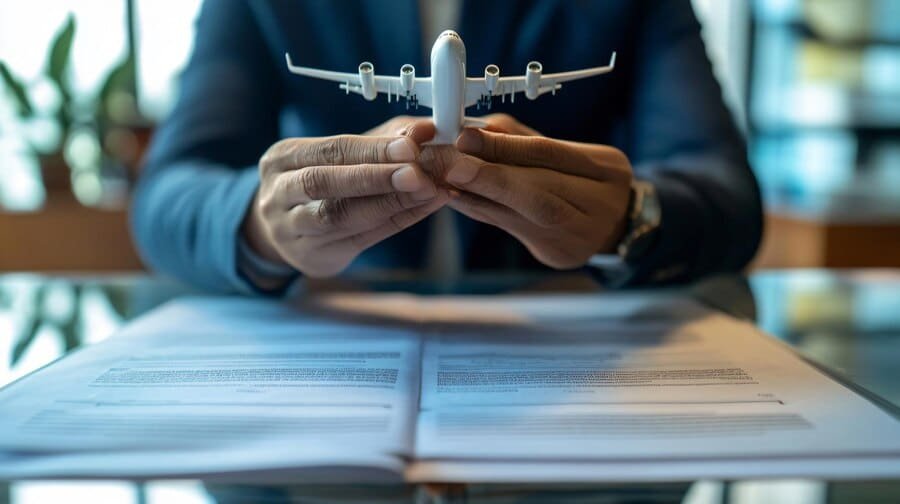Aviation is one of the most dynamic and high-risk industries in the world. With millions of flights taking off and landing every day, airlines must navigate a complex landscape of risks, from accidents and incidents to regulatory challenges and financial uncertainties. Aviation insurance plays a pivotal role in managing these risks, providing airlines with financial protection and peace of mind. This comprehensive article explores the significance of aviation insurance in risk management for airlines, detailing its various types, coverage options, and how it integrates into broader risk management strategies.
Understanding Aviation Insurance
What is Aviation Insurance?
Aviation insurance is a specialized form of insurance designed to cover risks associated with the operation of aircraft. Unlike standard insurance policies, aviation insurance addresses the unique challenges faced by airlines, airports, and other aviation-related entities. It provides coverage for a wide range of risks, including physical damage to aircraft, liability for passenger injuries, and damage to third-party property.
Types of Aviation Insurance

Aviation insurance encompasses several types of coverage, each tailored to address specific risks within the industry. The primary categories include:
- Hull Insurance: This covers physical damage to the aircraft itself, whether caused by accidents, weather events, or other unforeseen circumstances. Hull insurance can be further divided into:
- All Risks Hull Coverage: Covers all types of risks except for specific exclusions outlined in the policy.
- Named Perils Hull Coverage: Covers only specific risks named in the policy, such as collision, fire, or theft.
- Liability Insurance: This protects airlines against legal claims arising from injuries to passengers, crew members, or third parties. There are two main types of liability coverage:
- Passenger Liability Insurance: Covers claims for injuries or deaths of passengers on board the aircraft.
- Third-Party Liability Insurance: Covers damages or injuries inflicted on third parties, including property damage or personal injury on the ground.
- Ground Risk Hull Insurance: This provides coverage for damage to an aircraft while it is on the ground, excluding any in-flight risks.
- Aviation Product Liability Insurance: This covers manufacturers and distributors of aviation products against claims resulting from defects in their products that cause damage or injury.
- Crew Insurance: This coverage protects pilots and crew members against personal injury or death while performing their duties.
- War and Terrorism Insurance: This specialized coverage addresses the unique risks associated with acts of war, terrorism, and sabotage that may impact aviation operations.
- Airport Liability Insurance: This protects airport operators against claims arising from accidents occurring on airport premises, including those involving passengers and employees.
The Importance of Aviation Insurance in Risk Management
Aviation insurance is essential for airlines as it provides a safety net against the myriad risks they face. The following sections delve into the specific roles aviation insurance plays in risk management for airlines.
1. Financial Protection Against Unexpected Events
Airlines operate in an environment characterized by uncertainty. From mechanical failures to accidents, unforeseen events can have catastrophic financial implications. Aviation insurance helps mitigate these risks by providing financial coverage for losses incurred due to accidents, property damage, or liability claims. This protection allows airlines to maintain stability and continue operations, even in the face of significant financial setbacks.
2. Compliance with Regulatory Requirements
The aviation industry is heavily regulated, with numerous safety and operational standards that airlines must adhere to. Many countries require airlines to carry specific types of insurance to operate legally. By obtaining the necessary insurance coverage, airlines can ensure compliance with these regulations, avoiding potential fines and legal issues.
3. Enhanced Risk Management Strategies
Aviation insurance is an integral part of a comprehensive risk management strategy. Airlines often conduct detailed risk assessments to identify vulnerabilities and potential threats to their operations. By integrating insurance into their risk management framework, airlines can develop strategies to address and mitigate these risks effectively. For example, understanding the extent of coverage for various liabilities can inform operational decisions, such as the types of aircraft to use or routes to fly.
4. Reputational Protection
Accidents and incidents can significantly impact an airline’s reputation. Negative publicity from an accident can lead to a decline in passenger trust and revenue. Aviation insurance helps airlines manage reputational risks by providing resources to address claims promptly and efficiently. This responsiveness can mitigate damage to the airline’s image and maintain customer confidence.
5. Facilitating Investment and Financing
Aviation is a capital-intensive industry, requiring substantial investments in aircraft, technology, and infrastructure. Investors and lenders often look for evidence of risk management practices when deciding to finance an airline. Having comprehensive aviation insurance demonstrates a commitment to mitigating risks, making it easier for airlines to secure funding and attract investment.
Key Considerations for Airlines in Aviation Insurance

When selecting aviation insurance, airlines must consider various factors to ensure they have the right coverage. These considerations include:
1. Assessing Risk Exposure
Airlines should conduct thorough risk assessments to understand their unique risk exposure. This involves analyzing factors such as flight routes, aircraft types, operational practices, and regional risks. By identifying potential vulnerabilities, airlines can tailor their insurance coverage to address specific risks effectively.
2. Understanding Coverage Limits and Deductibles
It’s crucial for airlines to understand the coverage limits and deductibles associated with their insurance policies. Coverage limits dictate the maximum amount an insurer will pay for a covered loss, while deductibles represent the out-of-pocket costs the airline must bear before the insurance kicks in. Airlines should select limits and deductibles that align with their financial capabilities and risk tolerance.
3. Evaluating Insurer Reputation
Not all insurers are created equal, and the reputation of the insurance provider matters significantly. Airlines should research potential insurers’ financial stability, claims handling processes, and customer service reputation. Selecting a reputable insurer can enhance the overall insurance experience and ensure claims are handled efficiently.
4. Reviewing Policy Terms and Exclusions
Careful examination of policy terms, conditions, and exclusions is essential. Airlines must be aware of what is and isn’t covered to avoid surprises when filing a claim. Additionally, understanding any potential limitations in coverage can help airlines identify areas where they may need additional protection.
5. Seeking Professional Advice
Given the complexities of aviation insurance, consulting with insurance brokers or risk management professionals can provide valuable insights. These experts can help airlines navigate the nuances of different policies and tailor coverage to meet their specific needs.
Case Studies: The Impact of Aviation Insurance in Risk Management
To illustrate the importance of aviation insurance in risk management, let’s examine a few case studies highlighting its role during significant aviation incidents.
Case Study 1: The 2014 Malaysia Airlines Flight MH370 Incident
In March 2014, Malaysia Airlines Flight MH370 disappeared en route from Kuala Lumpur to Beijing, sparking one of the most extensive search efforts in aviation history. The airline faced enormous financial and reputational challenges in the aftermath of the incident. Malaysia Airlines had comprehensive aviation insurance in place, which helped cover the substantial costs associated with search operations, compensation claims from victims’ families, and legal fees.
The insurance coverage provided a financial cushion that allowed the airline to manage the immediate fallout from the tragedy while continuing to operate. Moreover, the prompt handling of claims helped mitigate reputational damage, demonstrating the critical role aviation insurance plays in crisis management.
Case Study 2: The Crash of Colgan Air Flight 3407

In February 2009, Colgan Air Flight 3407 crashed near Buffalo, New York, resulting in the deaths of all 49 passengers and crew members on board, as well as one person on the ground. The incident led to extensive investigations and legal claims against the airline.
Colgan Air had liability insurance that covered passenger injuries and third-party damages. The coverage facilitated the claims process and helped the airline manage the financial implications of the accident. This case underscores the importance of robust liability insurance for airlines, as it provides essential protection against claims arising from accidents.
The Future of Aviation Insurance
The aviation industry is evolving rapidly, driven by technological advancements, regulatory changes, and shifting market dynamics. As airlines face new risks, the role of aviation insurance will continue to adapt. Key trends shaping the future of aviation insurance include:
1. Increased Focus on Cybersecurity
With the growing reliance on technology and digital systems, cybersecurity has become a significant concern for the aviation industry. Airlines are increasingly vulnerable to cyberattacks that can disrupt operations and compromise sensitive data. Aviation insurance providers are beginning to offer specialized coverage for cyber risks, helping airlines mitigate potential losses associated with cyber incidents.
2. Emphasis on Sustainability
As the aviation industry moves toward more sustainable practices, insurance providers are adapting to accommodate this shift. Airlines that invest in eco-friendly technologies and practices may find insurers offering tailored coverage options that reflect their commitment to sustainability. This trend will likely continue as environmental considerations become increasingly important in aviation operations.
3. The Impact of COVID-19
The COVID-19 pandemic significantly affected the aviation industry, leading to unprecedented disruptions in air travel. Insurers are now reevaluating their policies to account for pandemic-related risks, and airlines are seeking coverage options that address potential future disruptions. This evolving landscape will likely shape the terms and conditions of aviation insurance policies moving forward.
Also Read : 10 Reasons Why You Might Need Disability Insurance
Conclusion
Aviation insurance is an essential component of risk management for airlines, providing financial protection, ensuring compliance with regulations, and supporting operational stability. By understanding the various types of aviation insurance and the role it plays in risk management, airlines can make informed decisions to protect their assets and maintain their operations.
As the aviation industry continues to evolve, airlines must remain vigilant in assessing their risks and adapting their insurance coverage to meet emerging challenges. The integration of aviation insurance into a comprehensive risk management strategy will not only enhance operational resilience but also ensure long-term sustainability in an increasingly competitive market.
FAQs
Q. What types of coverage does aviation insurance provide?
Aviation insurance provides several types of coverage, including hull insurance (for physical damage to aircraft), liability insurance (for passenger and third-party injuries), ground risk hull insurance, crew insurance, and war and terrorism insurance.
Q. Why is aviation insurance important for airlines?
Aviation insurance is crucial for airlines as it provides financial protection against unexpected events, ensures compliance with regulatory requirements, enhances risk management strategies, protects the airline’s reputation, and facilitates investment and financing.
Q. How can airlines assess their risk exposure?
Airlines can assess their risk exposure by conducting thorough risk assessments that analyze flight routes, aircraft types, operational practices, and regional risks. Identifying vulnerabilities allows for tailored insurance coverage.
Q. What factors should airlines consider when selecting an aviation insurance provider?
Airlines should consider factors such as the insurer’s financial stability, claims handling reputation, coverage limits and deductibles, policy terms and exclusions, and seek professional advice if needed.
Q. How does aviation insurance adapt to emerging risks?
Aviation insurance is adapting to emerging risks, such as cybersecurity threats and sustainability initiatives, by offering specialized coverage options and reevaluating policies in response to evolving industry challenges.


